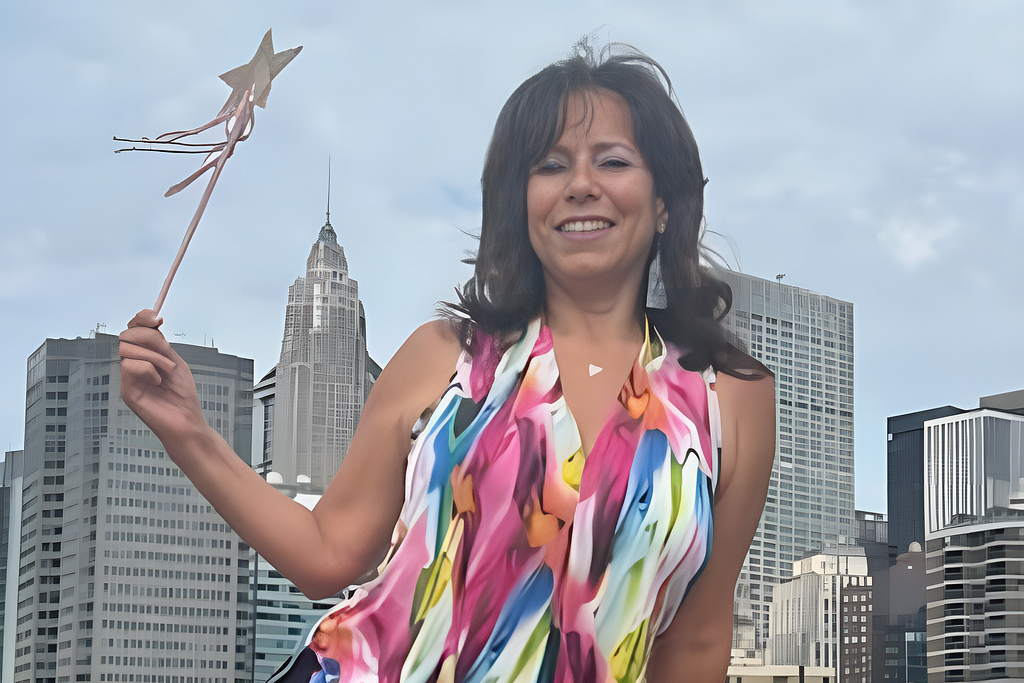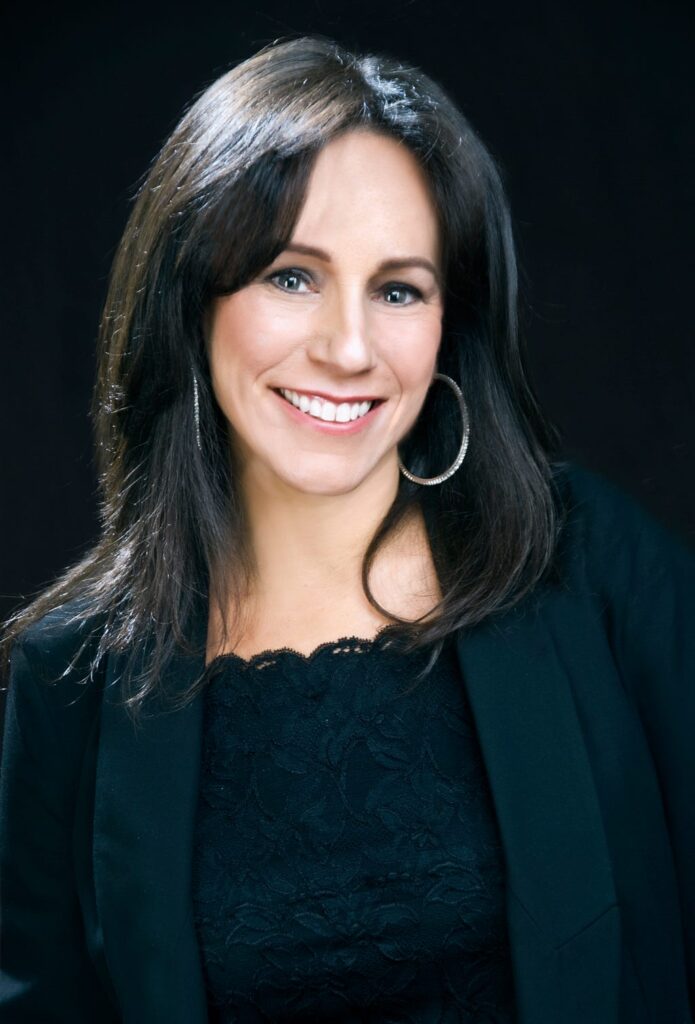Female Disruptors: Lauren Finkelstein Of Save One Person On The Three Things You Need To Shake Up Your Industry
…What’s disruptive about our work is that we take this statement and turn it around: “If you can save a life, it leads.” Not only do we change the media landscape by influencing which stories get airtime, but we also drive a media revolution of goodness and kindness — one with ripple effects that last long after a story airs. For example, when Stuart Zimmer needed a living kidney donor, a life-saving match was found because Reginna Grebb answered a plea she heard on the largest radio station in New York City. Stuart’s life was saved, and as a result, he went on to have two more children. Our media campaigns become co-creators in saving lives. What could be more disruptive than using the power of media for a higher purpose — to save and transform lives?..
As a part of our series about women who are shaking things up in their industry, we had the pleasure of interviewing Lauren Finkelstein. Lauren is the Founder of Save One Person, a non-profit that harnesses the power of the media to save the lives of people in need of living organ donors and medical miracles.
Thank you so much for doing this with us! Before we dig in, our readers would like to get to know you a bit more. Can you tell us a bit about your “backstory”? What led you to this particular career path?
I am a former TV promotion producer who worked for networks such as WABC, WNBC, Court TV, Inside Edition, and MTV. I used to believe that many segments on TV were superficial and meaningless. I thought it would be life-saving if every media outlet dedicated a small portion of its airtime regularly to saving lives by sharing people’s stories and critical life-saving needs.
After experiencing events such as the Sbarro suicide bombing in Jerusalem that killed 18 people, the tragedy of 9/11, and my father’s untimely death, I realized in 2001 that there was no time to waste in starting a media revolution for good. We share stories of people in need of living organ donors and medical miracles, encouraging the media to amplify these stories and inspire their audiences to help save lives.
Can you tell our readers what it is about the work you’re doing that’s disruptive?
As I’ve often heard people say in the media, “If it bleeds, it leads.” What’s disruptive about our work is that we take this statement and turn it around: “If you can save a life, it leads.”
Not only do we change the media landscape by influencing which stories get airtime, but we also drive a media revolution of goodness and kindness — one with ripple effects that last long after a story airs. For example, when Stuart Zimmer needed a living kidney donor, a life-saving match was found because Reginna Grebb answered a plea she heard on the largest radio station in New York City. Stuart’s life was saved, and as a result, he went on to have two more children.
Our media campaigns become co-creators in saving lives. What could be more disruptive than using the power of media for a higher purpose — to save and transform lives?
Can you share a story about the funniest mistake you made when you were first starting? Can you tell us what lesson you learned from that?
I used to attend celebrity events as a mommy blogger and leverage those opportunities to gain endorsements for my nonprofit. Once, I had an interview with Andy Garcia about his new movie at the time. Because of a snowstorm in NYC the night before, I wasn’t able to watch the film beforehand. I still had to conduct the interview without really knowing what the movie was about. I looked like a complete moron during the interview; however, I did manage to secure a celebrity endorsement for Save One Person. From that experience, I learned an important lesson: who cares if you look like an idiot — never stop going after what you want.
We all need a little help along the journey. Who have been some of your mentors? Can you share a story about how they made an impact?
Rabbi Simon Jacobson was by far the greatest influence and supporter of my work with Save One Person. After the Jerusalem suicide bombing that killed 18 people, the events of 9/11, and my father’s death, I found myself uncertain about the direction my life should take. During a sit-down meeting with Rabbi Jacobson, he made it clear that I should use my skills as a TV promotion producer to help others.
It was after this meeting that Save One Person was born, and it has been the focus of my time and work ever since.
In today’s parlance, being disruptive is usually a positive adjective. But is disrupting always good? When do we say the converse, that a system or structure has ‘withstood the test of time’? Can you articulate to our readers when disrupting an industry is positive, and when disrupting an industry is ‘not so positive’? Can you share some examples of what you mean?
I believe that, in our case, disrupting the media by shifting from leading with stories that bleed to leading with stories that save lives is unquestionably a good thing. However, not all disruptions are positive. New technology, while innovative, can often be destructive, taking away jobs and negatively impacting lives.
For example, how frustrating is it to encounter AI answering the phone, only to hit endless prompts and then get hung up on? I miss speaking to an actual person. Now, technology often disconnects us instead. I also worry about Uber drivers and taxi drivers who may lose their livelihoods with the advent of driverless cars. As a child, I loved walking through malls, but now many are empty because the masses, including myself, order products online, such as through Amazon. While being disruptive can bring about positive change, there is always fallout. These concerns need to be addressed, and companies should be responsible for offering solutions to the human lives that will be negatively impacted.
Can you share 3 of the best words of advice you’ve gotten along your journey? Please give a story or example for each.
1 . March to the beat of your own drummer.
There will always be naysayers when you aim to be a disruptor. It is crucial to listen to your own heart and trust those quiet inner whispers of what is true and important to you. I remember when I was starting Save One Person and shared my dreams and aspirations with my boss at the time, she looked at me lovingly and said, “Who will listen to you?” If I had let her words of discouragement derail my work, many lives would not have been saved. Stay true to yourself.
2 . Have fun, think outside the box, and be okay with not always getting what you want.
One time, Adam Sandler was standing outside my apartment in NYC shooting Uncut Gems. My son approached him and asked if he would go on camera to give a celebrity endorsement for his mommy’s nonprofit, which saves lives by helping people find living organ donors. Adam said yes, and we were thrilled to snag an A-list celebrity endorsement for Save One Person. Shortly after, I received a nasty email from his lawyers demanding that I take down Adam Sandler’s endorsement online or face a lawsuit. The letter was not only intimidating but also unnecessary. When I called his “people” to protest, explaining that no one forced Adam to say the kind things he did on camera, I was told, “Who goes up to celebrities without the proper channels?” My response was, “How often does Adam Sandler stand right outside your apartment in NYC?”
Although I removed Adam’s endorsement, it didn’t stop us. Over the years, many other celebrities have gladly gone on camera to promote our work. The experience was fun and pushed me outside my comfort zone. Asking for support — no matter how unconventional — can be intimidating, but it’s also where growth happens and miracles are born.
3 . There are many ways to expand your reach — seek advice from those who offer a different perspective.
One time, I had an intervention with Tony Robbins about my nonprofit, and he suggested exploring additional avenues to expand our reach and spread the word about our cause. Following that intervention, we launched the Save One Person app, began producing weekly educational health videos, wrote a couple of books about our work, added an online store to our website, and experimented with various strategies to broaden our impact.
There are countless ways to achieve your objective — don’t hesitate to learn from others and try new approaches.

We are sure you aren’t done. How are you going to shake things up next?
We are focusing not only on saving the lives of people who need living organ donors but also on disease prevention. Unfortunately, in America, the general public is not well-educated about what is killing us and the simple steps that can tip the scales of health in one’s favor. To address this, we share weekly health blogs that provide practical, easy-to-implement measures for disease prevention. While this may not be groundbreaking, it’s something many people have overlooked, and it’s essential to get back to the basics of maintaining good health.
In your opinion, what are the biggest challenges faced by ‘women disruptors’ that aren’t typically faced by their male counterparts?
Women disruptors are considered bitches until they make their mark, while men are brilliant.
Do you have a book/podcast/talk that’s had a deep impact on your thinking? Can you share a story with us?
I recently released a book titled “How to Create a Miracle: A Practical Guide to Turn the Impossible Possible.”
One of my favorite real-life stories in the book is about an 11-year-old girl in Jerusalem who received a living kidney donor after her story aired on NYC’s 1010 WINS Radio. As I like to say, in the blink of an eye, the miracle traveled from NYC (where the story aired) to England (where a woman heard the story and donated her kidney) to Jerusalem (where the girl in need received the life-saving kidney).
You are a person of great influence. If you could inspire a movement that would bring the most amount of good to the most amount of people, what would that be? You never know what your idea can trigger. 🙂
That every media outlet joins our cause by dedicating a portion of their daily airtime to highlighting stories of people in need of life-saving help and encouraging their audiences to volunteer to save those lives.
Can you please give us your favorite “Life Lesson Quote”? Can you share how that was relevant to you in your life?
Trade your expectation for appreciation, and your life can change in an instant. This is especially relevant in my own life because when things don’t go my way, I sometimes forget to look around and acknowledge all the blessings I already have. Living in a state of gratitude truly creates a beautiful life.
How can our readers follow you online?
Readers can check out our work at Saveoneperson.org
This was very inspiring. Thank you so much for joining us!
Female Disruptors: Lauren Finkelstein Of Save One Person On The Three Things You Need To Shake Up… was originally published in Authority Magazine on Medium, where people are continuing the conversation by highlighting and responding to this story.
